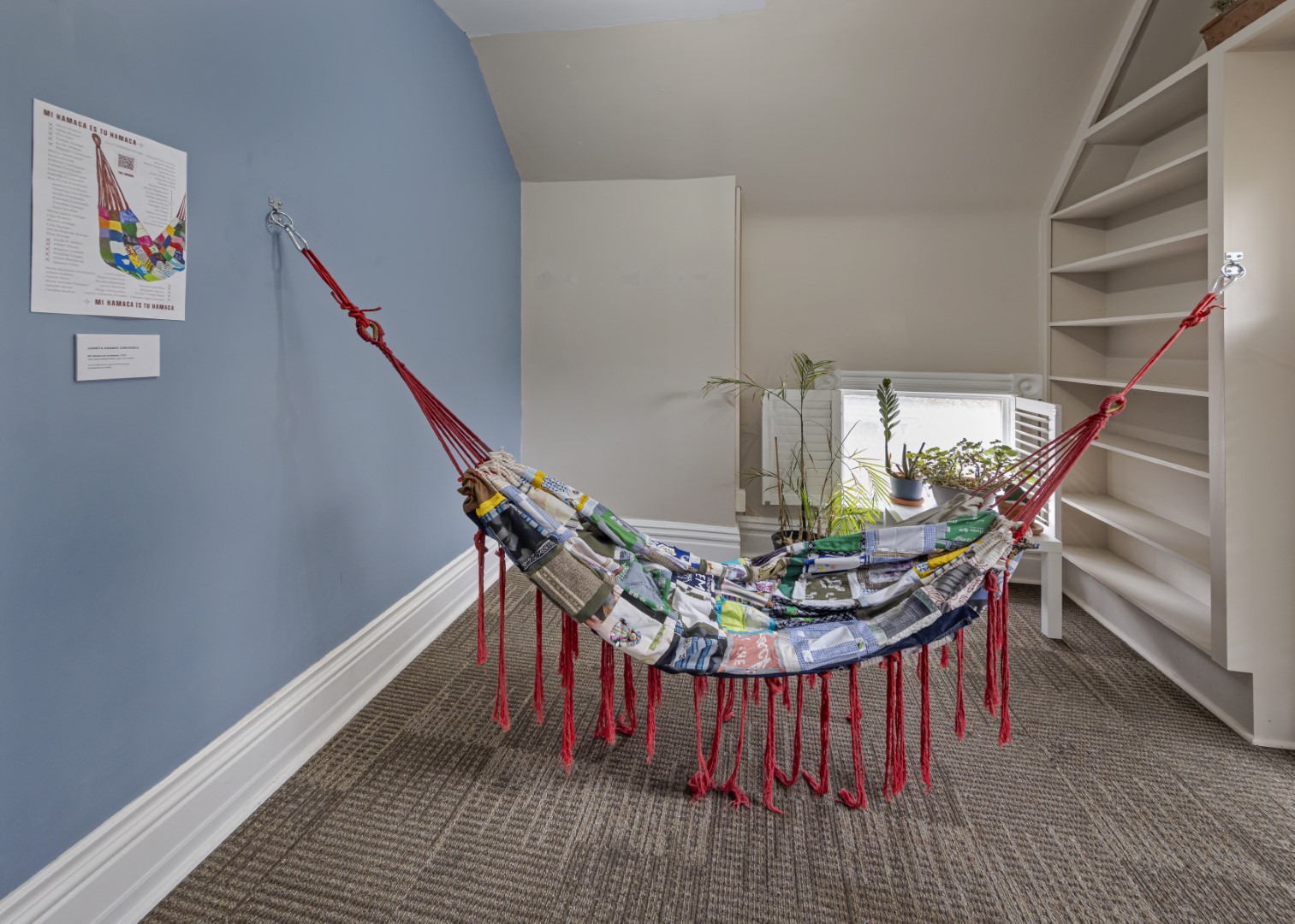Bio
Juanita Arango Corchuelo (they/she) is a Latinx/Colombian queer multimedia artist based in Tkaronto, who explores themes of the body and land parallel to each other. They’re especially interested in connecting their work to issues impacting Latin America and the Global South as a way of resistance.
Artist Statement
Mi Hamaca es tu hamaca is a quilted hammock built collectively from the collected fabrics of over 50 members of the Latinx communities in Tkaronto, the U.S., and Abya Yala. Birthed through collective care, each piece of clothing embodies a story of place-making as a tactic of inhabiting identities and belonging. The hammock becomes a container for memory, a space to rest together. It weaves together a constellation of experiences of being uprooted and rerooted, moving across geographical, linguistic, and identity borders, while resisting the tensions of living as diasporic bodies.
Quilt-making, politically rooted in community care and resistance, is an embodied form of archive, historically embraced by women and people of colour. This hammock is shaped by multiple authors, decentralizing the role of the artist in favour of the contributors. Patched together, the cloth creates a roadmap to navigate plural identities. Oral storytelling is passed on through material processes, where communities build and sustain themselves, holding space for reconnection and allowing for the survival of personal and collective memory.
Embracing Gloria Anzaldúa’s “Borderlands/La Frontera” and Mariana Ortega’s theory of “in-betweenness,” where the self is fluid and exists across multiple social locations, the work offers a space where Latinx identities can cohabit, recreate, and transform identity borders. It aligns with Latinx Futurisms by reimagining identities beyond colonial narratives, envisioning new possibilities of selfhood that resist Western categorizations.
At its core, this work explores rest as an act of resistance. The hammock—deeply rooted in Indigenous and Mestizx traditions of Abya Yala—becomes a space of play and joy. It reflects the domestic and cultural landscapes of Latinx communities, where especially in precarity, spaces of care, resilience, and belonging continue to emerge.






